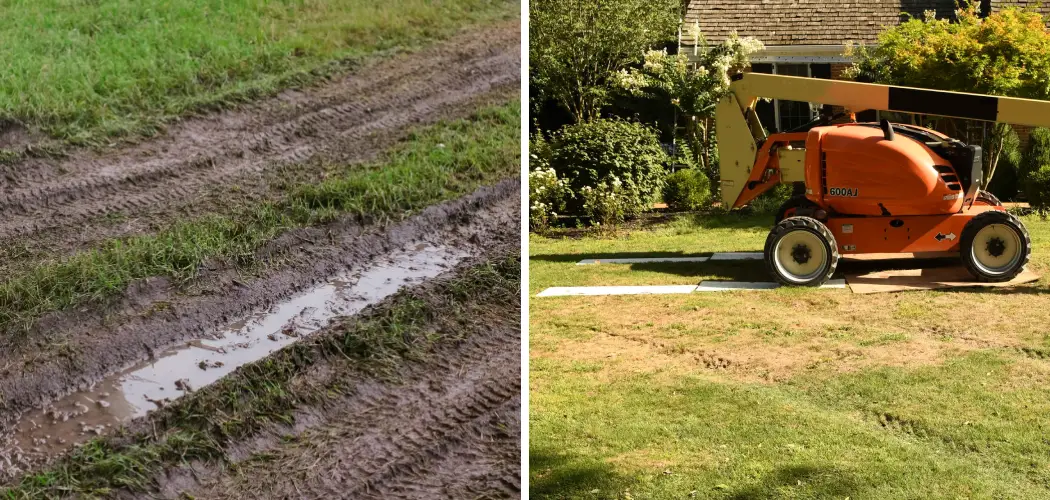Does the unsightly presence of tire tracks marring your once-pristine lawn send shivers down your spine? Fear not, discerning homeowner! This comprehensive guide will empower you with the knowledge and techniques to restore your verdant oasis to its former glory. From understanding the underlying causes of tire track damage to choosing the optimal repair methods, we will navigate this horticultural minefield together.

Image: up-gardening.com
Understanding the Culprits: Why Tire Tracks Form
Before embarking on the repair journey, it’s essential to understand the root causes of tire track formation:
- Compacted Soil: When heavy vehicles traverse your lawn, the weight compresses the soil, reducing its ability to drain properly and support healthy grass growth.
- Rutting: Repeated traffic in the same location, such as when turning or parking, can create deep ruts that gather water and further damage the lawn.
- Soil Erosion: Compacted soil is more susceptible to erosion, especially during heavy rainfall or irrigation, which can wash away topsoil and further expose tire tracks.
The Art of Repair: Reclaiming Your Lawn’s Beauty
With the underlying causes identified, let’s delve into the practical repair strategies to rejuvenate your lawn:
Method 1: Aeration and Overseeding
- Aeration: Using a manual or mechanical aerator, create small holes in the compacted soil to alleviate compression and improve drainage.
- Overseeding: Spread grass seed over the aerated areas and water thoroughly. Fresh grass will fill in the tire tracks and restore a lush appearance.

Image: outdoorfixes.com
Method 2: Leveling with Topsoil
- Remove Loose Debris: Clear away any damaged grass or debris from the tire tracks.
- Add Topsoil: Spread a thin layer of topsoil over the affected areas to level the ground.
- Tamp and Seed: Use a lawn roller or foot to lightly tamp the topsoil and overseed with grass seed.
Method 3: Soil Displacement
- Create Displacement Grooves: Dig shallow grooves parallel to the tire tracks on either side.
- Move Soil: Use a spade or shovel to carefully transfer soil from the grooves to the tire tracks, filling them in.
- Tamp and Seed: Tamp down the displaced soil and overseed to promote new grass growth.
Expert Insights and Actionable Tips: Enhancing Your Repair Journey
To ensure the success of your lawn restoration efforts, heed the following expert advice:
- Choose Grass Seed Wisely: Opt for grass varieties suited to your climate and lawn conditions for optimal results.
- Water Regularly: Keep the repaired areas moist during the germination and establishment phase.
- Avoid Overwatering: While watering is crucial, excessive moisture can suffocate grass roots.
- Fertilize As Needed: Provide your lawn with balanced fertilization to promote healthy growth and recovery.
How To Fix Tire Tracks In Lawn
Conclusion: Your Restored Lawn, Your Oasis of Tranquility
With patience, dedication, and the right techniques, you can bid farewell to unsightly tire tracks and welcome a vibrant, lush lawn that will be the envy of your neighborhood. Remember, the beauty of nature lies in its ability to heal and renew. Embrace this opportunity to restore your outdoor sanctuary and revel in the tranquility it brings to your life.